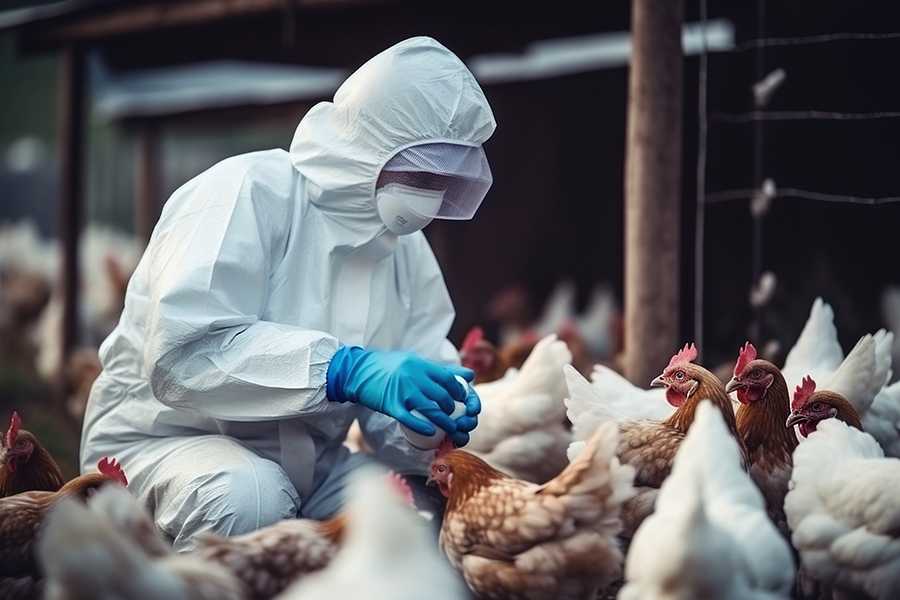
The price of eggs is often an inflationary barometer. The H5N1 bird flu has caused those prices to soar.
Egg shortages due to H5N1 bird flu have created record-breaking daily price increases. The latest avian influenza has slashed U.S. egg production by 5%, according to Karyn Rispoli, managing editor of Urner Barry’s Egg Division.
The resulting egg shortages have caused prices to spike 39% year over year, according to the Bureau of Labor Statistics. Meanwhile, health officials are monitoring the virus’s impact on humans, with the Centers for Disease Control and Prevention (CDC) confirming 66 cases since 2024, including one fatality in Louisiana last month.
Despite these developments, experts like Dr. George Rust, director of Florida State University’s Center for Medicine and Public Health, emphasize that the risk to the general public remains low.
“Human-to-human transmission is not occurring at this time,” Rust said, “but agricultural workers and those handling poultry or raw milk should exercise caution.”
Supply chain expert Larry Giunipero, a professor at FSU’s College of Business, notes that the disruption highlights vulnerabilities in food production systems.
“The bird flu has affected the number of chickens producing and hence the supply of eggs resulting in reduced output,” he said.
As authorities work to manage the economic and health implications of H5N1, experts stress the importance of vigilance in agriculture and public health, while reminding Americans to keep the risk in perspective.
For media inquiries on the medical effects of the H5N1 bird flu, Dr. Rust can be contacted at george.rust@med.fsu.edu.
For supply-chain inquiries, Professor Giunipero can be reached at lgiunip@business.fsu.edu.
Dr. George Rust, FSU director of the Center for Medicine and Public Health
Generally speaking, who is at greater risk of contracting H5N1 bird flu?
The greatest risk at this time for humans is for agricultural workers, especially in the poultry industry but also for workers with exposure to dairy cows. The H5N1 virus is also found in high concentrations in milk from infected dairy cattle, so consuming raw milk (or unpasteurized cheese or yogurt) creates unnecessary risk.
Avian flu is even more widespread among wild birds (ducks and geese but also shore birds like pelicans and herons as well as predators such as hawks and eagles). Waterfowl hunters need to exercise caution. Others who engage in outdoor activities should avoid touching sick or dead birds.
Backyard chickens can also become infected, so caution is advised. Overall, as long as H5N1 does not mutate to make human-to-human transmission easier, the general population is at very low risk.
What do you feel are some of the most important things to know about the current H5N1 bird flu?
Avian flu has the potential to be a very bad bug, with over 50% case fatality rates in earlier outbreaks. The current strain appears to be less virulent, causing milder illness in healthy individuals.
Avoid sick or dead birds (wild or domestic) and dairy cattle; don’t consume unpasteurized (raw) milk or milk products. On the other hand, keep risk in perspective. To date, there has been only one death in the entire U.S. due to avian flu.




